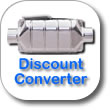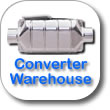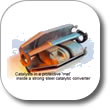

Please support our site's generous sponsors.

Catalytic Converter
dot org
Contact Us

|
|
| |
 |
 |
 |
Monroe Shocks & Struts Frequently Asked Questions
Q: What is the difference between shock absorbers and struts?
A. Struts and shocks are very similar in function, but very different in design. The job of both is to control excessive spring motion; however, struts are also a structural component of the suspension. Struts can take the place of two or three conventional suspension components and are often used as a pivot point for steering and to adjust the position of the wheels for alignment purposes.
Back to Top
Q: How many miles do shocks and struts last?
A. Experts recommend replacement of automotive shocks and struts at 50,000 miles. Testing has shown that original equipment gas-charged shocks and struts degrade measurably by 50,000 miles*. For many popular-selling vehicles, replacing these worn shocks and struts can improve the vehicle's handling characteristics and comfort. Unlike a tire, which rotates a specific number of times per mile, a shock absorber or strut may compress and extend several times per mile on a smooth road, or several hundred times per mile on a very rough road. There are other factors that affect the life of a shock or strut, such as, regional weather conditions, amount and type of road contaminates, driving habits, loading of the vehicle, tire / wheel modifications, and the general mechanical condition of the suspension and tires. Have your shocks and struts inspected by your local Monroe Expert Plus dealer or any ASE Certified Technician once a year, or every 12,000 miles.
Back to Top
Q: How do I know when my shocks or struts need to be replaced?
A. It's relatively easy for most vehicle owners to determine when their tires, brakes and windshield wipers are worn out. Shocks and struts, on the other hand, aren't nearly as simple to inspect, in spite of the fact that these safety-critical components are high susceptible to everyday wear and tear. Shocks and struts should be inspected by your local Monroe Expert Plus dealer or any ASE Certified Technician every time it is brought in for tire, brake or alignment services. During a road test, a technician may notice an unusual noise originating from the suspension system. The technician may also notice that the vehicle exhibits excessive bounce, sway, or dive during braking. This could warrant additional inspection. If the shock or strut has lost a large amount of fluid, if it is bent or broken, or if it has damaged brackets or worn bushings, it should be repaired or replaced. Generally, replacement of parts will be required if a part no longer performs the intended purpose, if the part does not meet a design specification (regardless of performance), or if a part is missing. Replacement shocks may also be installed in order to improve the ride, for preventative reasons, or to meet a special requirement; for example, load-assisting shock absorbers can be installed for leveling a vehicle that is often used to carry additional weight.
Back to Top
Q: A technician pointed out that I have a light film of oil covering my shocks or struts, should they be replaced?
A. If the shocks or struts are functioning correctly, a light film of oil covering the top half of the working chamber does not warrant replacement. This light film of oil results when oil used to lubricate the rod gets wiped from the rod as it travels into the painted part of the shock or strut. (The rod is lubricated as it cycles in and out of the working chamber). When the shock / strut is manufactured, an extra amount of oil is added to the shock / strut to compensate for this slight loss. On the other hand, fluid leaking down the side of the shock / strut indicates a worn or damaged seal, and the unit should be replaced.
Back to Top
Q: I have replaced my shocks / struts several times within a few months due to excessive oil leakage. What is causing them to fail prematurely?
A. The main cause of oil leakage is seal damage. The cause of the damage should be identified and corrected prior to replacing shocks or struts. Most suspensions incorporate some type of rubber suspension stops called "jounce" and "rebound" bumpers. These bumpers protect the shock or strut from damage due to topping or bottoming. Most struts also utilize replaceable dust boots to keep contaminants from damaging the oil seals. To prolong the life of the replacement shocks or struts, these components should be replaced if they are worn, cracked, damaged or missing.
Back to Top
Q: What will happen if I don't replace worn shocks or struts?
A. Shocks and struts are an integral part of your suspension system. They work to prevent suspension parts and tires from wearing out prematurely. If worn, they could jeopardize your ability to stop, steer and maintain stability. They also work to maintain tire contact with the road and reduce the rate at which vehicle weight transfers among the wheels when negotiating corners or during braking.
Back to Top
Q: My new tires are starting to wear unevenly. Is this due to the ride control parts?
A. There are many factors which affect tire wear. The five main items are: 1. Driving habits 2. Alignment settings 3. Tire pressure settings 4. Worn suspension or steering components 5. Worn shocks or struts A "cupped" wear pattern is typically caused by worn steering / suspension components or by worn shocks / struts. Typically, worn suspension components (i.e. ball joints, control arm bushings, wheel bearings) will result in sporadic cupping patterns, whereas worn shocks / struts will generally leave a repeating cupping pattern. To prevent replacement of good components, all parts should be inspected for damage or excessive wear prior to replacement.
Back to Top
Q: A service technician said my struts had failed and were leaking oil; however, my vehicle has gas charged struts. Could this be true?
A. Yes, gas charged shocks / struts contain the same amount of oil as standard hydraulic units do. Gas pressure is added to the unit in order to control a condition referred to as "shock fade," which occurs when the oil in a shock or strut foams due to agitation, excessive heat, and low pressure areas which develop behind the piston (aeration). The gas pressure compresses air bubbles trapped within the oil until they are so small that they do not affect the shock's performance. This allows the unit to ride better and to perform more consistently.
Back to Top
Q: I've had my shocks / struts replaced; however, my vehicle still makes a metallic "clunking noise" when driving over bumps. Are my new struts / shocks bad?
A. There is most likely nothing wrong with the replacement units, but a metallic "clunking noise" typically indicates loose or worn mounting hardware. If the noise is present with a replacement shock absorber, check that the mountings are tightened securely, and look for other worn suspension parts. Some shock absorbers utilize a "clevis" type mount, which must squeeze the sides of the shock's "mounting sleeve" very securely (like a vise would) in order to prevent noise. If the noise is present with a strut, then the upper bearing plate should be inspected and replaced if necessary. Old mounting bolts can stretch if over-torqued or if they have been loosened and retightened multiple times, resulting in a noise. If mounting bolts no longer hold their original torque, or if they have been stretched, they should be replaced.
Back to Top
Q: Are there any other parts I should consider replacing while having my struts / shocks serviced?
A. Definitely! Because removal, replacement and alignment of struts or shock absorbers can be labor intensive, it is a good idea to have the "bearing / mounting plate", and mounting bolts inspected along with other parts that are designed to protect the strut / shock such as the "jounce bumper" and "dust boot". You'll not only be saving yourself from paying for the same labor charges again, but you will also be protecting the investment you made in new parts.
Back to Top
Q: Does my vehicle need to be aligned after I have my struts replaced?
A. Yes. Monroe recommends alignments anytime replacement struts are installed. However, there are a few exceptions where the vehicle manufacturer does not provide alignment provisions, or where the alignment angles are not affected by a strut replacement. Examples include certain double wishbone, some modified type struts, and suspension systems which utilize shock absorbers. For more detailed information, contact your local Monroe Expert Plus Dealer • Dealer Locator • or our Technical Assistance Team.
Back to Top
Q: I recently had the struts replaced on my vehicle and now the coil spring rubs on the inner fender well when I turn the wheels. What is causing this?
A. When installing existing components onto a replacement strut, care must be taken to insure the upper spring seat is installed with the correct orientation to the lower spring seat or mount. The orientation of the upper spring seat determines the direction that the coil spring is bowed to allow for inner fender clearance. If the orientation is off, the spring may rub on the inner fender well when the wheels are turned or when the suspension is compressed.
Back to Top
Q: The steering wheel on my strut-equipped vehicle does not return to center after negotiating a corner. What could be causing this?
A. The main cause for this is a strut bearing plate that will not rotate freely due to contaminants, over-torqued rod nut, or wear. Other causes can include: low tire pressure, incorrect alignment angles, and binding steering components such as ball joints, tie-rod ends, and steering rack.
Back to Top
Q: I am trying to install new shock absorbers on my vehicle; however, they are too short to install with the wheels hanging. Do I need longer shocks?
A. In most cases, no… many vehicles use shock absorber length to limit the suspension travel when the wheels are hanging in order to protect components from damage. For this reason, shocks should be installed with the vehicle suspension at normal ride height. Replacement could be performed on drive-on type ramps, over a mechanics pit, or on an alignment rack. Examples of components typically protected against damage from over-extension are: ball joints, tie-rod ends, 4WD half shafts / CV joints, U-joints, brake lines, ABS sensor lines, and height sensors. If the vehicle has been modified with an aftermarket suspension system, specially designed longer shocks are typically required.
Back to Top
Q: I have just had a snowplow installed on the front of my pick-up truck; can I adjust the tension of the torsion bars to level the truck without damaging the shock absorbers?
A. When a heavy snowplow is added to the front of a truck, the ride height must be set (raised) to fall within the vehicle manufactures specifications. This will prevent premature failure of the shock absorbers, damage to other suspension parts and will ensure correct tire alignment. However, if the plow is removed (during the off-season), the ride height should be readjusted again (lowered) back to the manufacturer's specified ride height, or suspension/ shock damage may occur.
Back to Top
Q: I would like to retrofit shock absorbers to my camper/ trailer which did not originally come equipped with shocks. Is this possible? If so, how do I figure out what length shock to use on an application which did not originally come with shocks?
A. Monroe manufactures Trailer Retrofit Kits for both leaf and torsion axles. These kits are designed to work on 1,500 lb. all the way up through 7,000 lb. GVW axles. They will also work with C-Channel, I-Beam and rectangular tube frames. For detailed kit information, refer to www.monroeheavyduty.com.
Back to Top
Q: Can shock absorbers be mounted upside down (rod end down) and still function properly?
A. Most modern shock absorbers utilize a twin (dual) tube construction; in order to work properly the inner of the two tubes (working chamber) should stay completely filled with oil. The outer (reserve) tube contains an oil reserve along with air or a pressurized gas. If the unit is mounted inverted (rod side down), the air or gas in the outer chamber can enter the inner working chamber, resulting in poor damping performance. Therefore, twin tube shock absorbers should not be mounted upside down (or on their side), with the exception of specially designed units that incorporate a gas cell, or cellular gas material, designed to keep the gas retained in the outer reserve tube.
Back to Top
Q: My older vehicle originally came equipped with expensive electronically controlled adjustable struts. Can I replace these with less expensive non-adjustable struts?
A. Yes, certain vehicles can be modified to accept non-electronic replacement units if the owner desires to remove the O.E. electronic ride control system. For more information, refer to the attached pdf - Electronic to Standard, Shock / Strut Conversion Instructions. Monroe also manufactures conversion kit, part number 90001, designed to convert the air suspension used on the 1988-1994 Lincoln Continental to conventional coil spring struts.
Back to Top
Q: Why is the spring seat on the replacement strut much larger than on the original strut I'm replacing?
A. As a safety feature, some replacement struts are equipped with a large diameter lower spring seat. This seat is designed to prevent a broken coil spring from contacting the tire. Clearance should be checked if larger tires, tire chains, or replacement wheels are being used.
Back to Top
|
 |
 |
 |
 |
 |
|
|
| |
home | catalytic
converter care
| about us | e-mail
 Copyright 2020 ImageBuilders Web Design Copyright 2020 ImageBuilders Web Design
|
|
|


Please support our site's generous sponsors.


Catalytic Converters dramatically reduce harmful exhaust emissions


Catalytic converters typically consist of a ceramic or metal
honeycombed monolith substrate that carries precious metal
catalysts.
|






